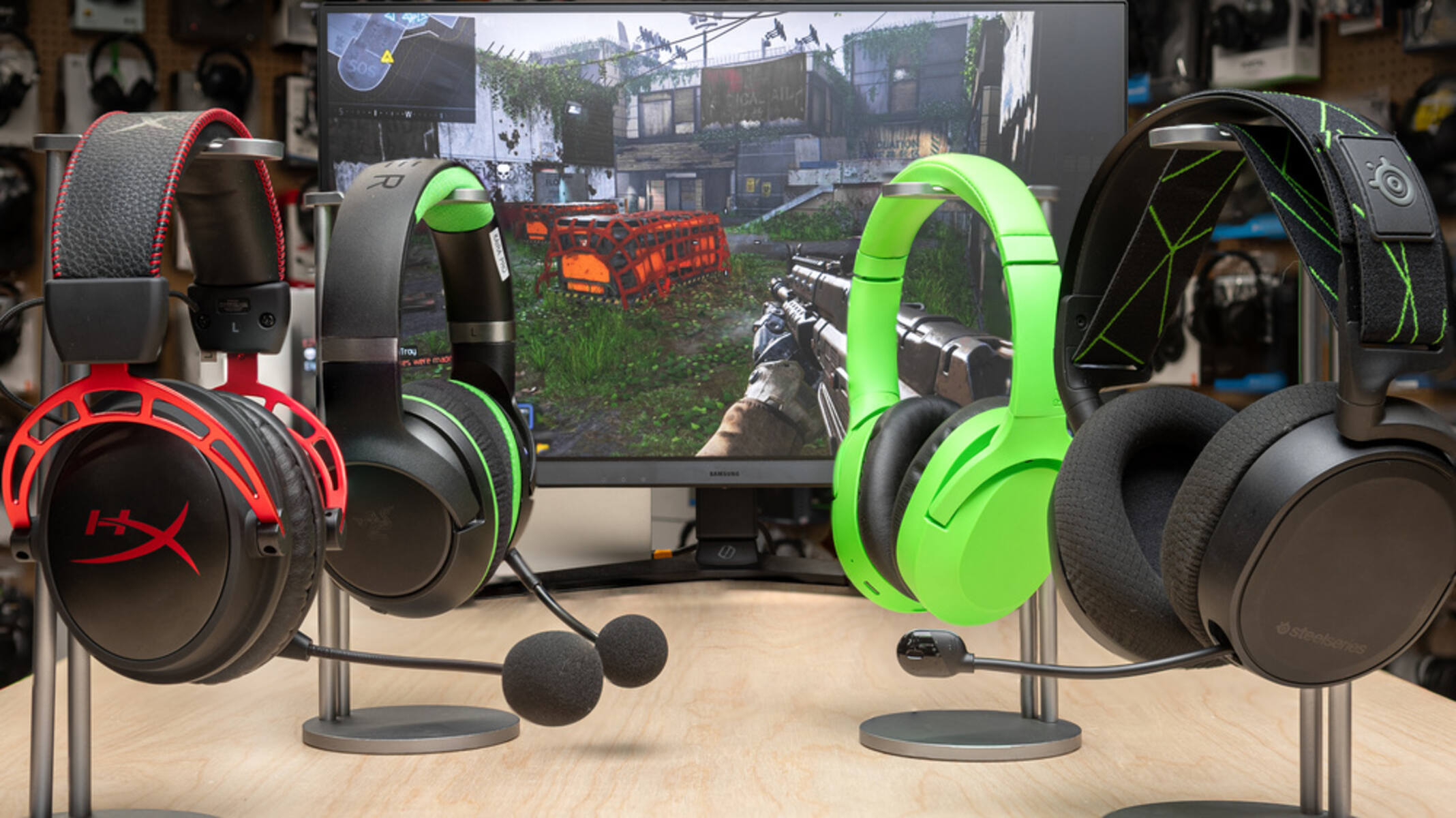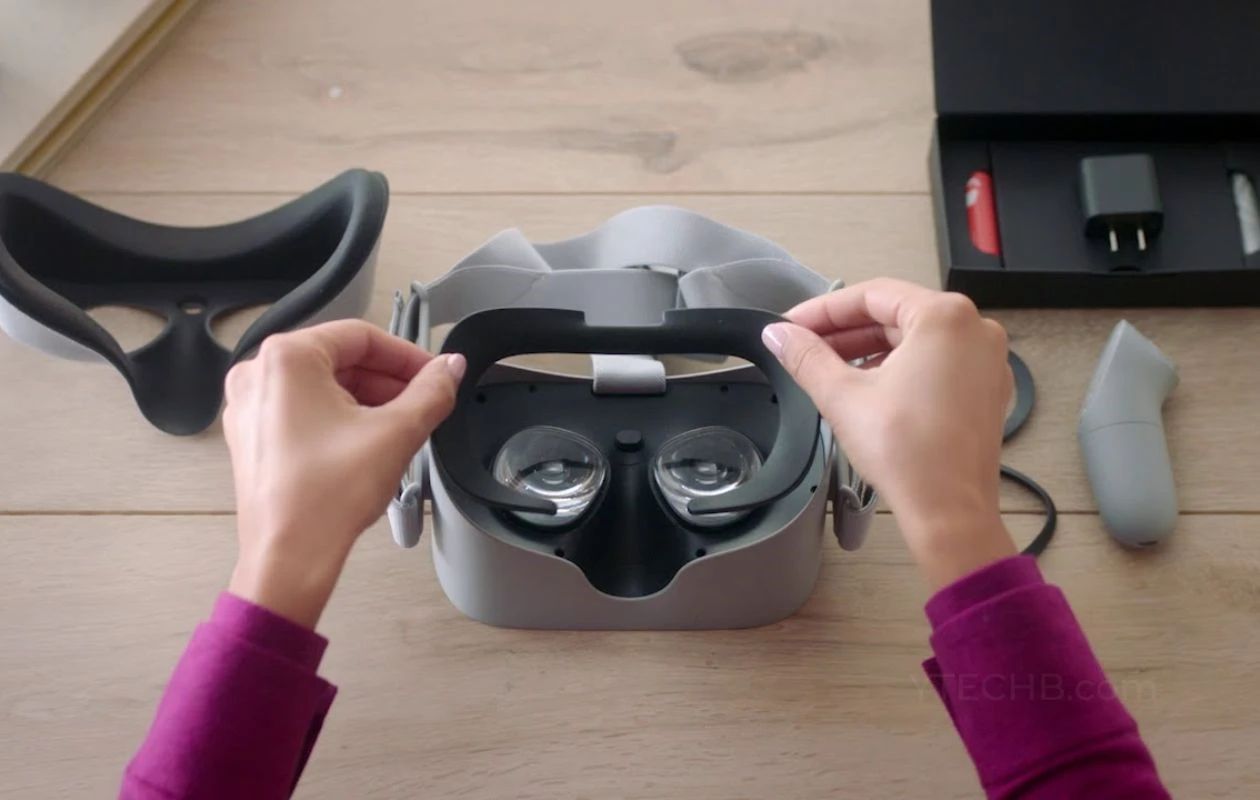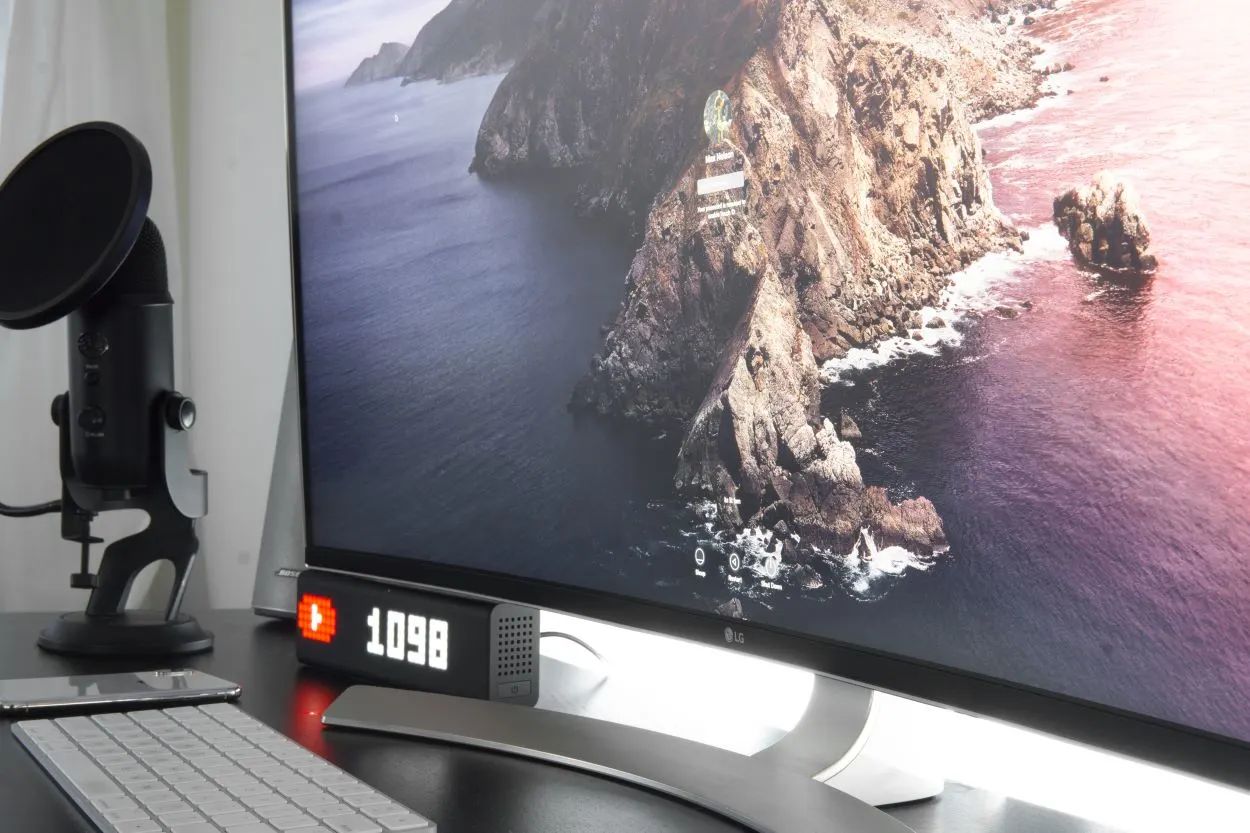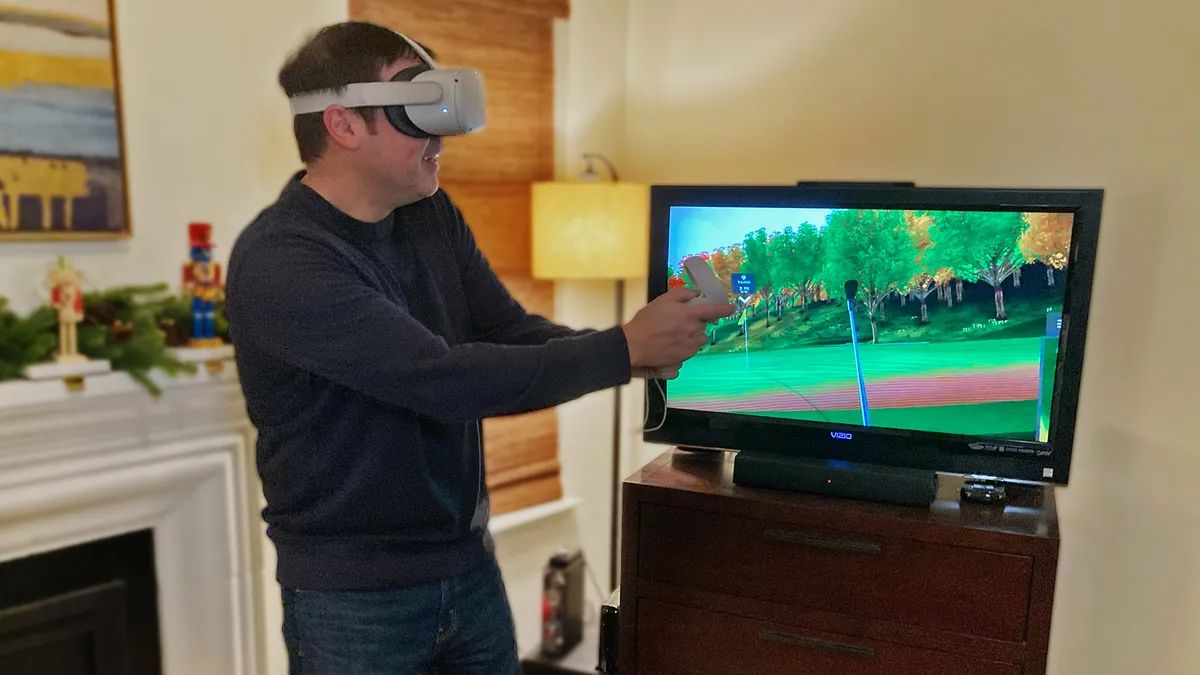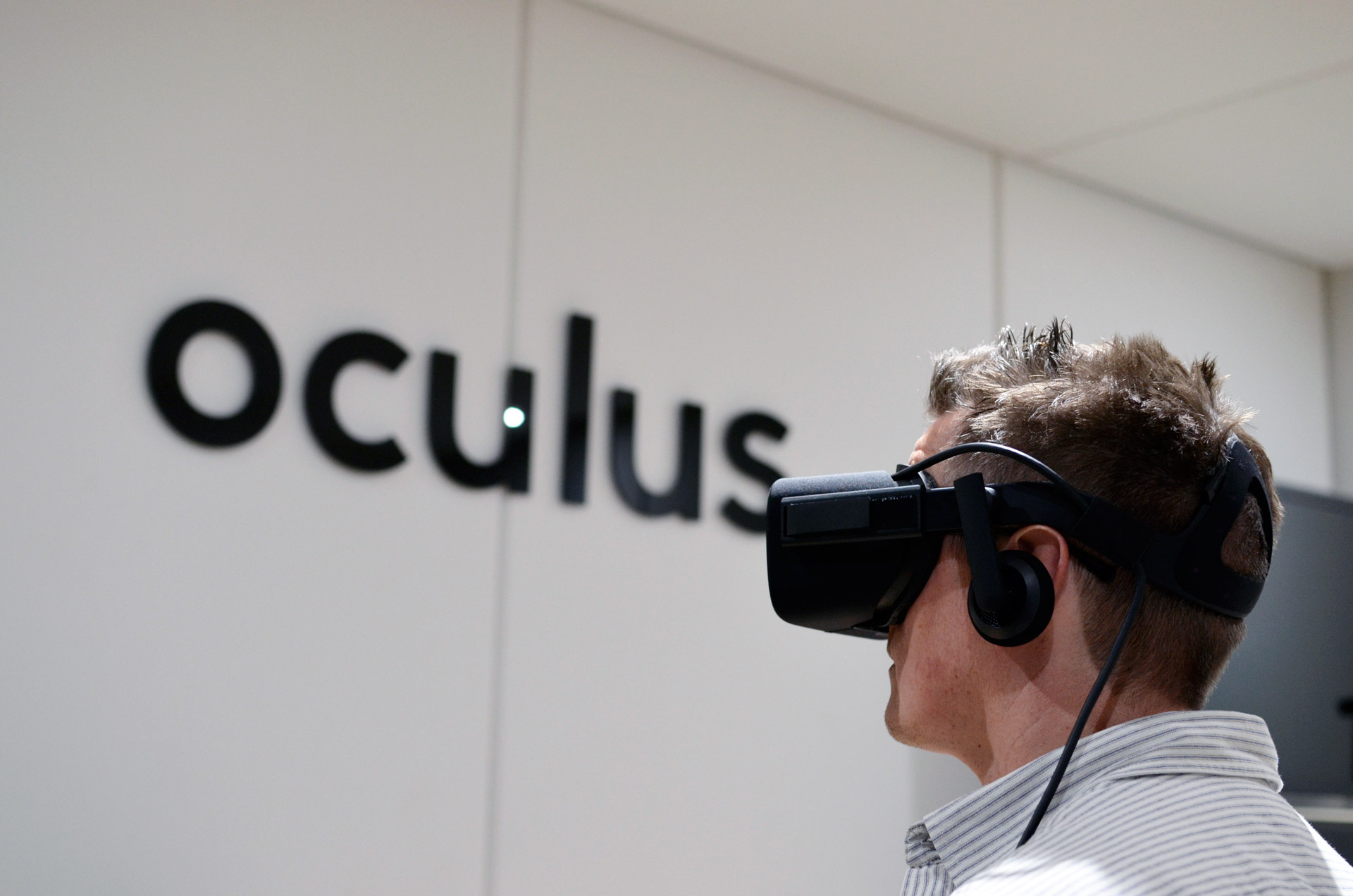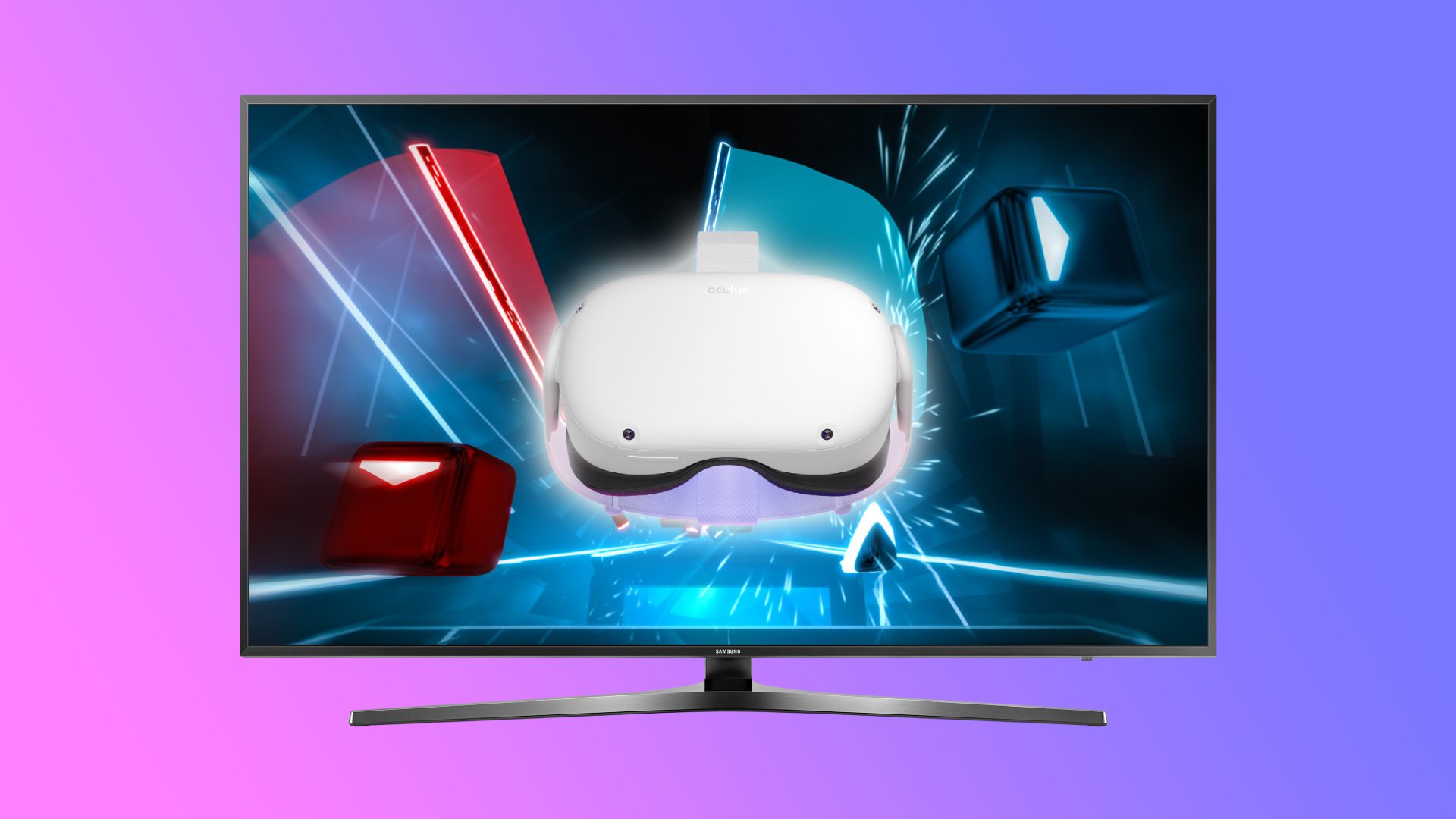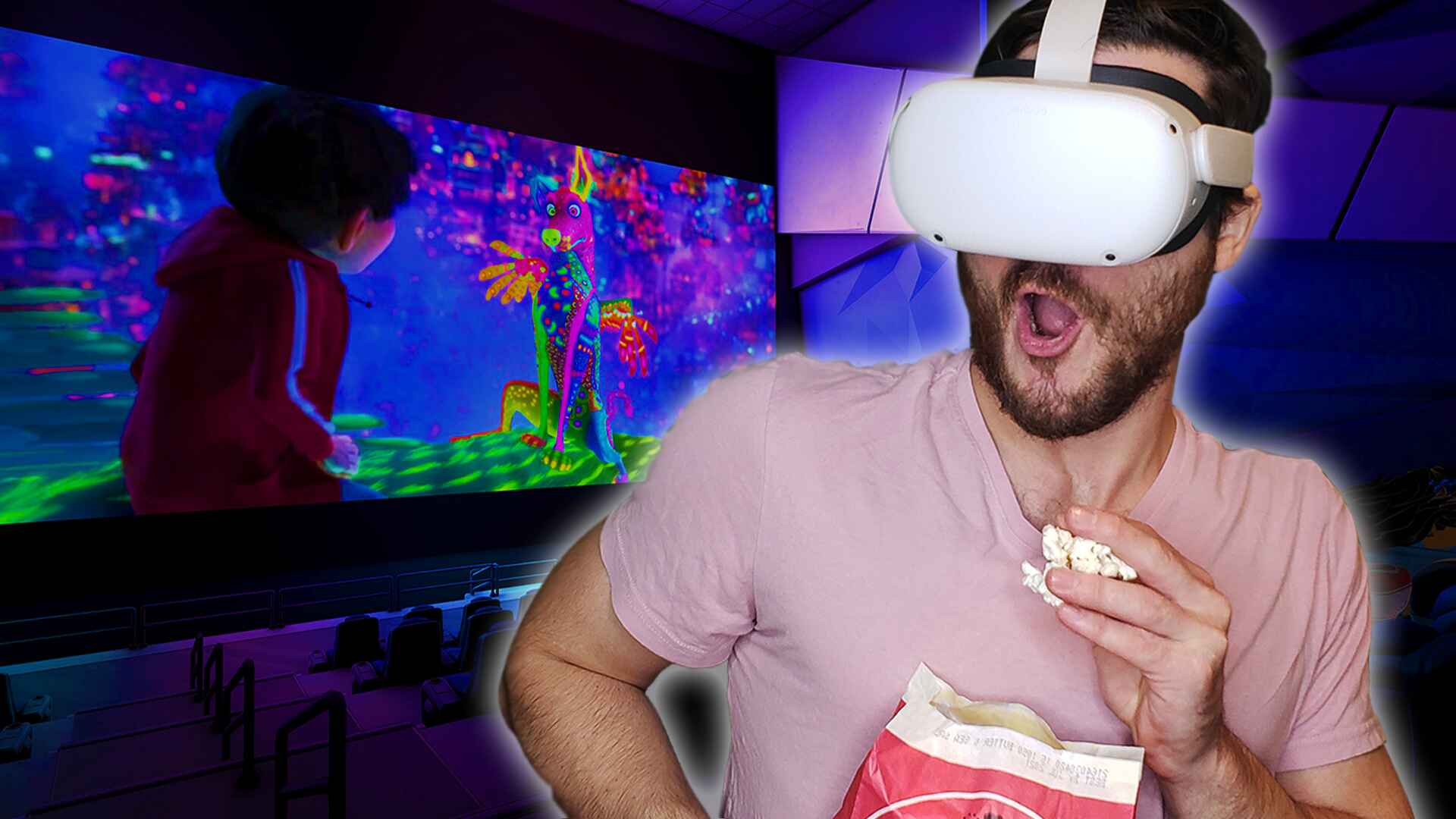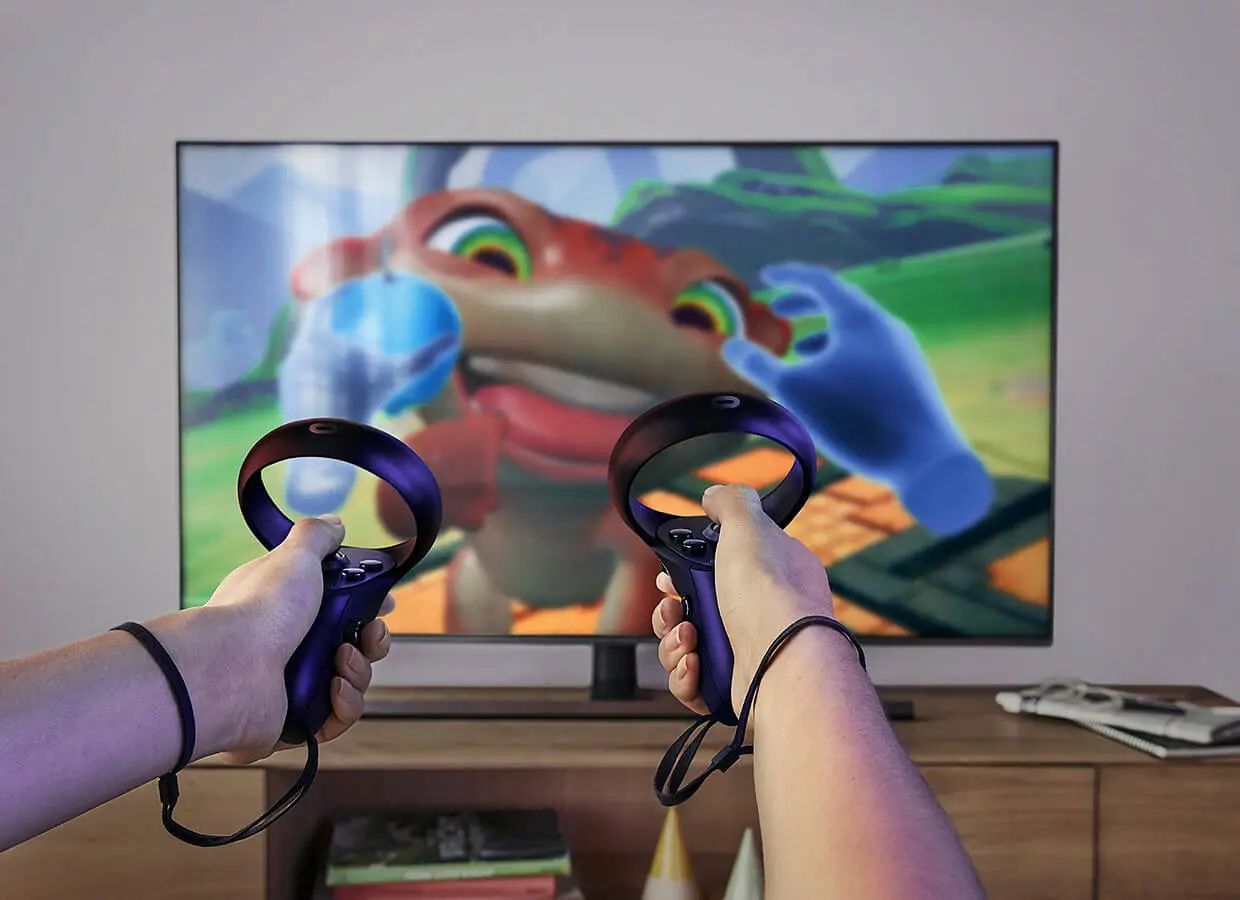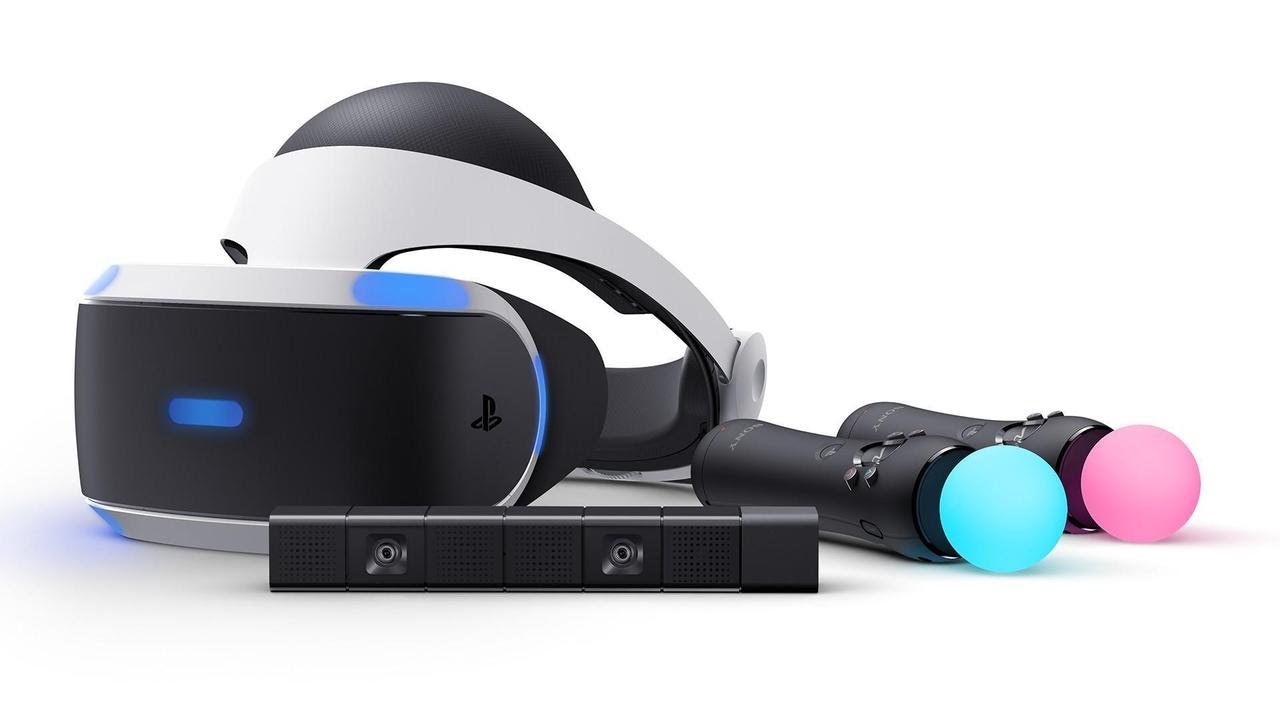Introduction
Are you an avid gamer who loves to immerse yourself in the virtual world of gaming? Do you often find yourself wanting to enhance your gaming experience by connecting your gaming headset to your TV for an even more immersive audio experience? If so, you're in the right place! In this guide, we will delve into the intricacies of getting your gaming headset to work seamlessly with your TV, unlocking a whole new level of auditory satisfaction.
Gaming headsets have become an indispensable accessory for gamers, offering unparalleled sound quality and the ability to communicate with fellow gamers during multiplayer sessions. While these headsets are primarily designed for use with gaming consoles and PCs, many gamers are now seeking ways to connect them to their TVs to enjoy a more immersive audio experience while playing console games or watching movies.
Understanding the compatibility and intricacies of connecting a gaming headset to a TV can be a game-changer, quite literally. Whether you're a casual gamer or a dedicated enthusiast, the prospect of elevating your audio experience can add a new dimension to your gaming sessions.
In the following sections, we will explore the various aspects of this process, from understanding the compatibility of gaming headsets with TVs to the step-by-step process of connecting them and adjusting the settings for optimal performance. Additionally, we will address common troubleshooting issues that may arise, ensuring that you can overcome any obstacles along the way.
So, if you're ready to take your gaming experience to the next level by integrating your gaming headset with your TV, let's dive into the intricacies of this process and unlock the full potential of your gaming setup.
Understanding the Compatibility
Before embarking on the journey of connecting your gaming headset to your TV, it’s essential to understand the compatibility between the two devices. While gaming headsets are primarily designed for use with gaming consoles, PCs, and mobile devices, they can also be connected to TVs with the right setup.
One of the critical factors to consider is the type of connection supported by both the gaming headset and the TV. Most modern gaming headsets utilize a 3.5mm audio jack or USB connection for audio output, while TVs may feature a variety of audio output options, including HDMI, optical audio, RCA, and 3.5mm audio output.
Prior to connecting the gaming headset, it’s crucial to check the available audio output ports on your TV and ensure that they are compatible with the input options supported by your gaming headset. For instance, if your gaming headset uses a 3.5mm audio jack, you’ll need to verify whether your TV has a corresponding 3.5mm audio output or an alternative port that can be adapted to accommodate the headset’s connection.
Furthermore, some gaming headsets may require additional adapters or converters to establish a connection with the TV, especially if the TV’s audio output options differ from the headset’s input requirements. Understanding the specific audio output capabilities of your TV and the corresponding input options of your gaming headset is fundamental to achieving a successful and seamless connection.
Another aspect to consider is the compatibility of the TV’s audio settings with the gaming headset. Certain TVs offer audio output settings that may need to be adjusted to optimize the sound output for external devices such as gaming headsets. Understanding how to navigate the audio settings on your TV can significantly impact the overall audio experience when using a gaming headset.
By gaining a comprehensive understanding of the compatibility between your gaming headset and TV, you can effectively navigate the process of connecting the two devices and ensure a harmonious integration that enhances your gaming and entertainment endeavors.
Connecting the Gaming Headset to the TV
Once you’ve familiarized yourself with the compatibility aspects, it’s time to embark on the process of physically connecting your gaming headset to the TV. Depending on the specific ports and adapters involved, the steps may vary slightly, but the fundamental principles remain consistent.
1. Identify the Audio Output Port: Begin by identifying the audio output port on your TV. Common audio output options include HDMI, optical audio, RCA, and 3.5mm audio output. If your TV has multiple output options, select the one that is compatible with your gaming headset’s input requirements.
2. Select the Correct Cable or Adapter: Based on the audio output port on your TV and the input options of your gaming headset, select the appropriate cable or adapter to establish the connection. For instance, if your gaming headset uses a 3.5mm audio jack and your TV features a corresponding 3.5mm audio output, a standard 3.5mm audio cable will suffice. However, if the ports differ, you may need a compatible adapter or converter.
3. Connect the Cable or Adapter: Once you have the necessary cable or adapter, connect one end to the audio output port on your TV and the other end to the input port on your gaming headset. Ensure that the connection is secure to prevent audio disruptions during use.
4. Power On and Test the Connection: After establishing the physical connection, power on your TV and gaming headset. Navigate to the audio output settings on your TV and select the corresponding output option to ensure that the audio is being routed to the connected gaming headset. Test the audio output by playing a game or a video to confirm that the headset is receiving the audio signal from the TV.
5. Adjust Headset Volume and TV Settings: Once the connection is verified, adjust the volume settings on your gaming headset to a comfortable level. Additionally, explore the audio settings on your TV to fine-tune the sound output and optimize the audio experience for the connected gaming headset.
By following these steps, you can successfully establish a physical connection between your gaming headset and TV, setting the stage for an enhanced audio experience that complements your gaming and entertainment activities.
Adjusting Settings on the TV
After connecting your gaming headset to the TV, it’s essential to explore and adjust the audio settings on the TV to optimize the sound output for the connected headset. While the specific settings and options may vary based on the TV model and manufacturer, there are general adjustments that can enhance the audio experience when using a gaming headset.
1. Audio Output Selection: Navigate to the audio output settings on your TV and ensure that the correct audio output option is selected to route the sound to the connected gaming headset. If your TV offers multiple audio output options, such as internal speakers, external speakers, and headphones, choose the headphone or external speakers option to direct the audio to the gaming headset.
2. Sound Mode Selection: Many TVs feature different sound modes, such as standard, movie, music, and game modes. Selecting the appropriate sound mode can optimize the audio output for gaming, enhancing the clarity of in-game audio cues and dialogue. Experiment with different sound modes to determine which setting complements your gaming experience when using the headset.
3. Equalizer Settings: Some TVs provide equalizer settings that allow users to adjust the audio frequencies to their preference. Depending on the gaming headset’s audio characteristics and your personal preferences, fine-tuning the equalizer settings can tailor the sound output to deliver a more immersive and customized audio experience.
4. Volume Leveling: Explore the volume leveling or volume normalization options on your TV, if available. These features can help maintain a consistent volume level across different content, preventing sudden volume spikes or fluctuations that may disrupt the gaming experience. Adjusting the volume leveling settings can contribute to a more balanced and enjoyable audio experience when using the gaming headset.
5. Audio Delay Adjustment: In some cases, users may encounter audio delay or synchronization issues when using a gaming headset with a TV. If you notice any audio delay between the visuals and the sound, check if your TV offers audio delay adjustment settings. Fine-tuning the audio delay can align the sound with the on-screen action, ensuring a seamless and immersive gaming experience.
By adjusting these settings on your TV, you can optimize the audio output for the connected gaming headset, fine-tuning the sound characteristics to align with your gaming preferences and create an immersive audio environment that enhances your overall gaming experience.
Troubleshooting Common Issues
While connecting and using a gaming headset with a TV can significantly enhance the audio experience, it’s not uncommon to encounter common issues that may hinder the seamless integration of the two devices. By familiarizing yourself with potential challenges and their respective solutions, you can troubleshoot and resolve these issues effectively, ensuring an optimal gaming and entertainment experience.
1. No Audio Output: If you’re not receiving any audio through the gaming headset after connecting it to the TV, double-check the physical connection to ensure that the cable or adapter is securely plugged into both devices. Additionally, verify that the TV’s audio output settings are configured to route the sound to the connected headset. If using a wireless gaming headset, ensure that it is properly paired with the TV or the audio source to establish a reliable connection.
2. Audio Quality Issues: In some instances, users may experience issues related to audio quality, such as distorted sound, static, or intermittent audio disruptions. These issues can stem from incompatible audio settings, inadequate cable connections, or signal interference. Troubleshoot these issues by adjusting the TV’s audio settings, replacing the audio cable or adapter, and minimizing potential sources of signal interference, such as other electronic devices in close proximity.
3. Compatibility Challenges: If your gaming headset and TV exhibit compatibility challenges, such as mismatched audio output options or incompatible ports, consider utilizing compatible adapters or converters to bridge the gap between the two devices. Research and acquire the necessary accessories to facilitate a seamless connection and ensure compatibility between the gaming headset and the TV’s audio output.
4. Audio Delay or Synchronization Issues: Audio delay or synchronization issues can detract from the immersive gaming experience. If you notice a delay between the visual and audio elements, explore the TV’s audio delay adjustment settings to synchronize the sound with the on-screen action. Additionally, ensure that the gaming headset’s firmware and drivers are up to date to mitigate potential latency issues.
5. Limited Volume Control: Some gaming headsets may exhibit limited volume control when connected to a TV, restricting the ability to adjust the audio output to desired levels. In such cases, consider using the TV’s volume control to manage the audio level, or explore alternative audio output options on the TV that offer greater control over the volume settings for external devices.
By addressing these common issues through systematic troubleshooting, you can overcome potential obstacles and ensure a seamless integration of your gaming headset with the TV, unlocking the full potential of your audio experience and enhancing your gaming and entertainment endeavors.
Conclusion
As technology continues to evolve, the integration of gaming headsets with TVs has become an increasingly popular endeavor among gaming enthusiasts seeking to elevate their audio experience. By understanding the compatibility between gaming headsets and TVs, mastering the process of physical connection, and optimizing the audio settings, gamers can unlock a new realm of immersive sound that complements their gaming and entertainment activities.
Connecting a gaming headset to a TV involves navigating the intricacies of audio output options, identifying compatible cables or adapters, and adjusting the TV’s settings to ensure optimal audio performance. While challenges such as audio quality issues, compatibility constraints, and audio synchronization may arise, proactive troubleshooting can effectively address these issues, paving the way for a seamless integration.
Ultimately, the successful integration of a gaming headset with a TV empowers gamers to immerse themselves in the rich audio landscapes of their favorite games, enhancing the clarity of in-game sound effects, dialogue, and musical scores. Additionally, the ability to enjoy cinematic experiences and multimedia content with enhanced audio fidelity adds a new dimension to entertainment, making the gaming headset a versatile accessory for diverse audio pursuits.
By following the guidelines outlined in this guide and leveraging the troubleshooting strategies, gamers can overcome common obstacles and harness the full potential of their gaming headsets when connected to TVs. The fusion of cutting-edge audio technology with the visual splendor of gaming and multimedia content creates an immersive sensory experience that resonates with the evolving landscape of entertainment and gaming culture.
As you embark on the journey of integrating your gaming headset with your TV, may the harmonious fusion of audio and visual elements enrich your gaming escapades and elevate your entertainment experiences to new heights. Embrace the power of audio immersion, and let the symphony of sound transport you to realms limited only by your imagination.







